
19-12-2025 10:10
Patrice TANCHAUDBonjour, récolte réalisée en milieu dunaire, a

18-12-2025 17:23
 Bruno Coué
Bruno Coué
Bonjour,je serais heureux d'avoir votre avis sur c

18-12-2025 21:17
Pol DebaenstThe identification took me to Byssonectria deformi

18-12-2025 18:07
Margot en Geert VullingsThese plumes were found on rotten wood.They strong

17-12-2025 18:35
 Michel Hairaud
Michel Hairaud
Bonjour à tous/Hi to everyone I am passing along

15-12-2025 15:48
 Danny Newman
Danny Newman
Melanospora cf. lagenaria on old, rotting, fallen

15-12-2025 15:54
 Johan Boonefaes
Johan Boonefaes
Unknown anamorph found on the ground in coastal sa

15-12-2025 21:11
 Hardware Tony
Hardware Tony
Small clavate hairs, negative croziers and IKI bb

15-12-2025 07:09
 Danny Newman
Danny Newman
indet. Rutstroemiaceae sp. on unk. fallen leavesMc
 Hello everyone,
Hello everyone,Collected on a decorticated branch of Quercus robur here in Belgium:
Ascomata superficial to slightly immersed, subglobose, 0,1-0,15 mm diam., papillate, pale brown, covered by black setae. Asci cylindrical, apex truncate, 8-spored but mostly observed with 16 part-spores, 42-47x6 µm. Spores fusiform, constricted 1-septate, soon disarticulating in part-spores; part-spores ellipsoid to wedge-shaped, smooth, hyaline, 3-3,5x1,5-2 µm. Paraphyses soon disappearing. Ectal excipulum of pale brown, small-celled textura ?epidermoidea; setae acute, base swollen, smooth, thin-walled, aseptate, blackish, 39-56x7-10 µm.
With those Hypocrea-like spores, this must be a Melanopsammella? Unfortunately, I only have documentation of species with septate hairs.
Your help is welcome.
Bernard

this reminds me strongly of Trichosphaerella decipiens, with apically acute, mainly unbranched setae. But what I know under that name (on Peniophora) has globose, finely warted spores.
But Ellis & Ellis (pl. 1193 in centre of plate) figure elongate spores.
Similar is Neorehmia ceratophora, with antler-like setae and also globose warted spores.
Zotto

I fear that nobody will see your posting except me and Bernard?
Has someone this article? Samuels & M.E. Barr (1998) Notes on and additions to the Niessliaceae (Hypocreales): Can. J. Bot. 75(12): 2166 ['1997']
Maybe it could help us...
Le voilà.
Amitiés, Guy

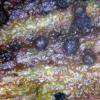
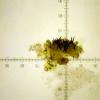
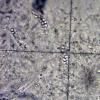
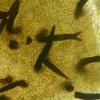

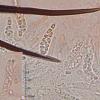
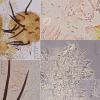
 Samuels-amp-Barr-CJB-75-2165-2176-1998-0001.pdf
Samuels-amp-Barr-CJB-75-2165-2176-1998-0001.pdf